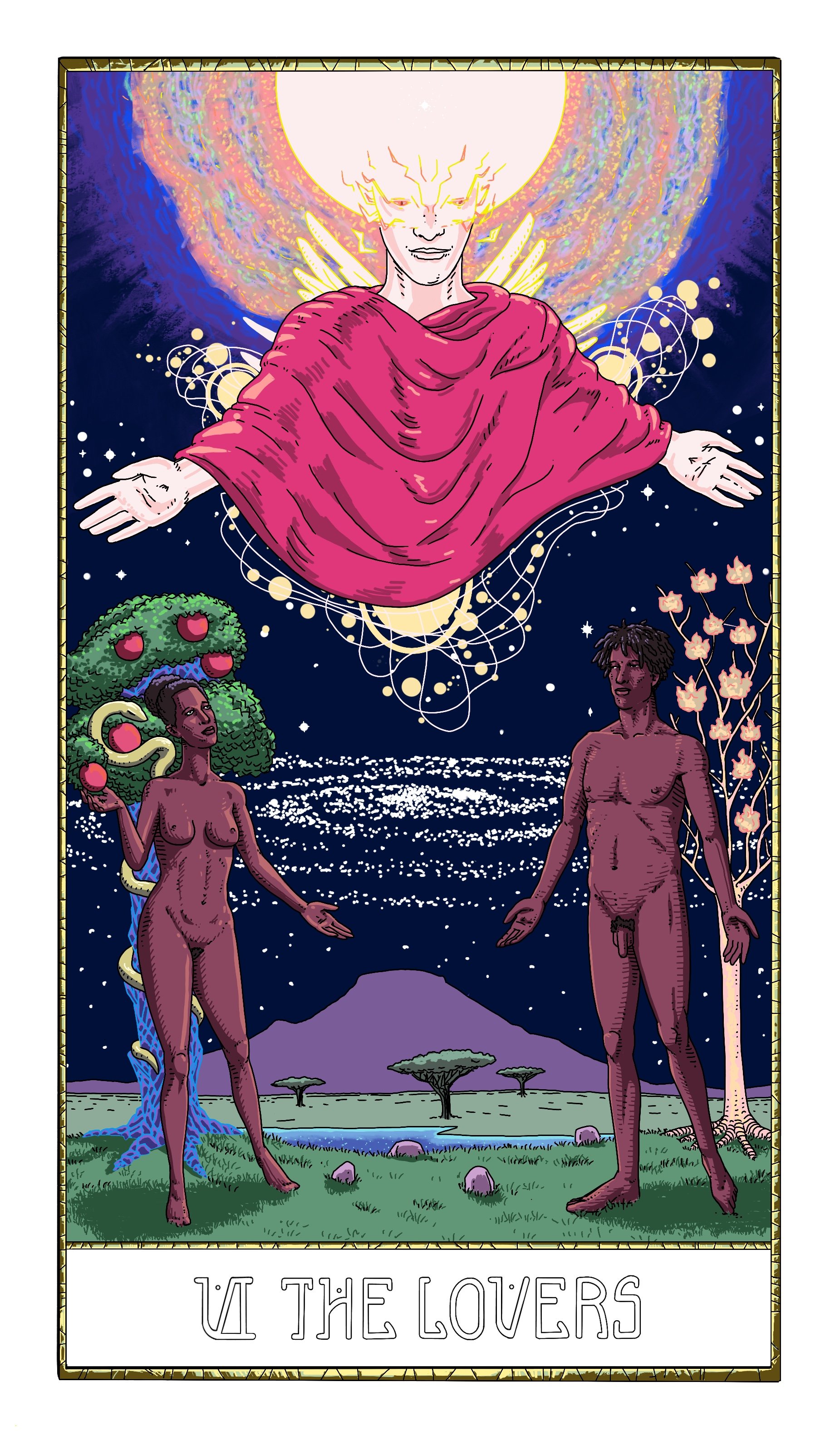One facet of cults is that they are often led by individuals who claim the right to redefine the meaning of words and events to suit their whims, usually in a manner that maximizes their personal power and control. This can be a sneaky process, and often one that begins with an enlightened guru figure claiming special knowledge of how to live a good life. Examples of this slippery slope are littered throughout the history of popular religious movements, and it’s a problem I’ve pondered as I’ve developed the guidebook for interpreting my own tarot deck. How does a (not particularly wise or intelligent) individual avoid the problem of guru-style ego inflation while writing a guide for proper thought and action? The answer I’ve settled on is to dodge as best I can by opening the guidebook to crowdsourced input from anyone who owns a copy of Singularity Tarot. I want YOU to write this guidebook.
Before I explain how this collectivized document will come about, let me first defend the premise that the interpretive meaning of tarot cards is subjective enough to be gleaned from the wisdom of crowds. One of my favorite tarot guides is Rachel Pollack’s Tarot Wisdom, mostly because it offers a history of the changes in interpretation for each card. For example, Ms Pollack’s entry for Major Arcanum number six, “The Lovers”, charts the evolution of this card from signifying “vice and virtue” in 1750, to “the ordeal” in 1870, and finally “attraction, love and beauty in 1910. All of these quotations were pulled from authors writing within the occult tradition, but, clearly, their interpretations changed dramatically with the evolution of culture. Maybe tarot cards represent Jungian archetypes or Platonic forms, but if that’s true, it certainly has not limited the myriad ways people have come to understand these symbols.
Singularity Tarot began with the purpose of harmonizing the ancient symbols of the tarot with futuristic and science-fiction ideas. While there are specific concepts that inspired most of the original art, the manner in which these concepts should be interpreted will vary with history and experience. For example, consider my version of the four of swords, which depicts an imaginary and fantastical version of a fusion reactor, an engine for creating limitless clean energy by crushing hydrogen atoms together instead of blasting them apart. This is a theoretically feasible technology that has yet proven practically impossible to achieve for generations of scientists. Treating fusion technology as a symbol, we might associate it with idealism, collaboration, and personal sacrifice for a long-term vision. Imagine, however, that in one hundred years fusion technology has been accomplished, but that recently a reactor exploded and killed a large number of people; or imagine that your mother is a scientist that has sacrificed spending time with you to pursue the distant dream of helping to build a fusion reactor. The valence of this card will vary greatly depending on who you are and what you bring to a reading.
As of now, I’ve written a beta version of a guidebook for Singularity Tarot based on key words and phrases for each card. I’m writing longer entries for each card, but I don’t want the utility of this guidebook to be limited by my own understanding. Rather, I want it to grow and change with the community of people who come to use it. Right now the guidebook exists as an open google document. Anyone who has bought a deck and received an email link can edit the guidebook. Eventually, I hope to turn this document into a website like wikipedia that’s under constant revision by its users. By crowdsourcing the content of the guidebook, Singularity Tarot will become a living thing that distills the wisdom of many people.
Perhaps this sounds like a difficult plan to put into action. Perhaps you own a copy of Singularity Tarot, but don’t want to contribute to the guidebook for fear of saying the wrong thing or contradicting the original idea of the card. It is true that in a collective document, any person that offers an interpretation takes the risk that their contribution be deleted or altered by another user. But changes will be vetted by the community, and your idea may be resurrected from the bin of previous guidebook versions. As the creator of the deck, I will be in the same position as everyone else. In this manner the guidebook will grow and evolve in relation to the people that contribute to it.
I take my model for how feedback can be submitted from visual thinking strategy, a discussion framework I used when working as an educator at an art museum. Trying to encourage school children to share thoughts on artwork they knew nothing about, I would ask:
What do you see?
How does it make you feel?
What ideas does it make you think about?
These questions are simple, but they can open up a whole universe of thought. Moreover, they are useful reminders that a piece of art (or a tarot card) and a viewer exist in a direct relationship that is independent of the intention of the artist or the historical context of the piece’s creation - those things are outside the frame, so to speak. Even if users choose to journal their reactions to Singularity Tarot privately, they will find value and growth in their personal understanding of each card. By contributing to the collective guidebook, users will help build a democratic consensus while staking a claim for the value of their own perspective and agency. Anyone with a deck and an interest is invited to help shape the reality of Singularity Tarot.



